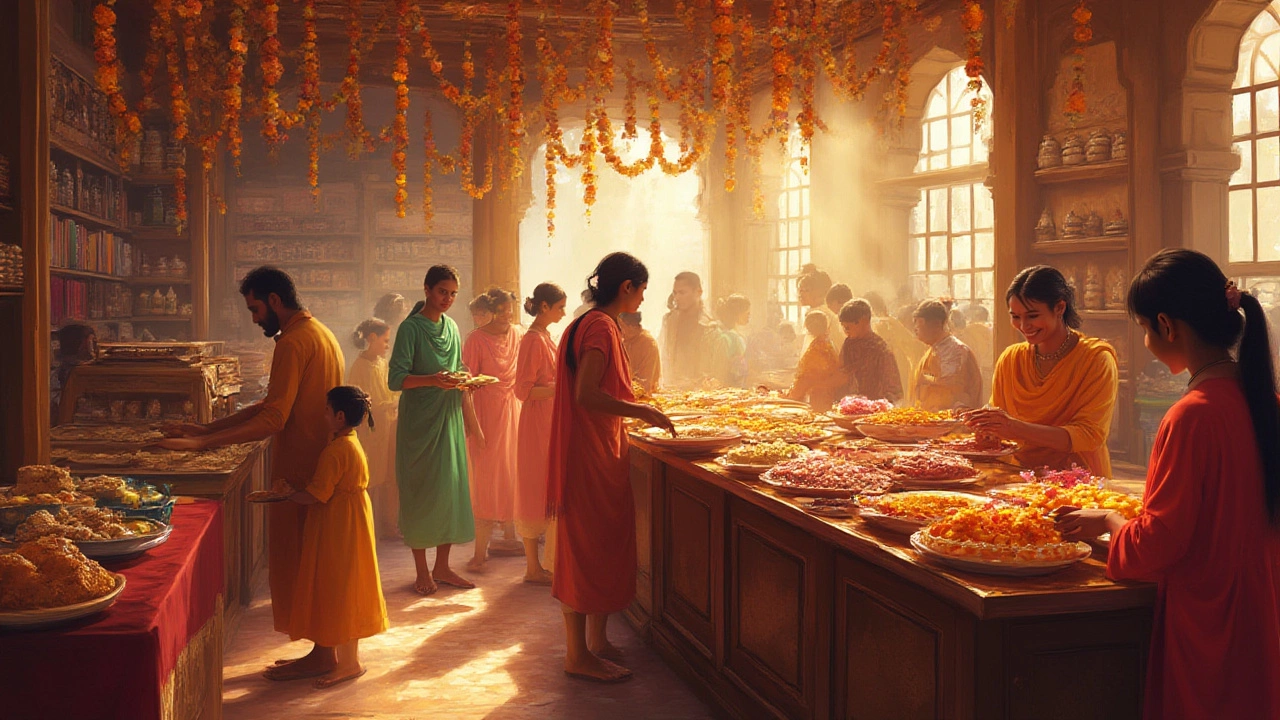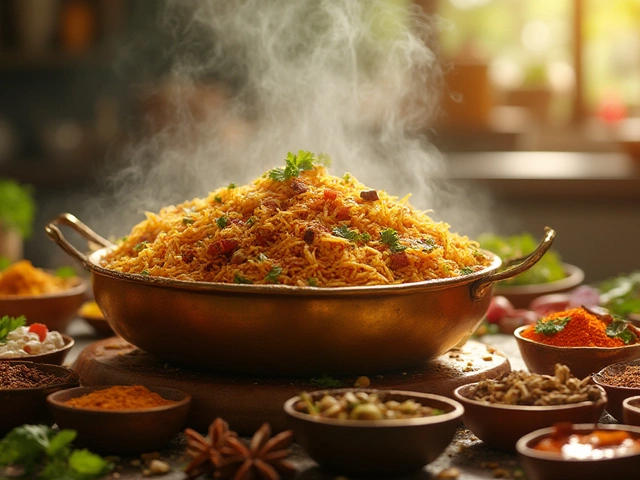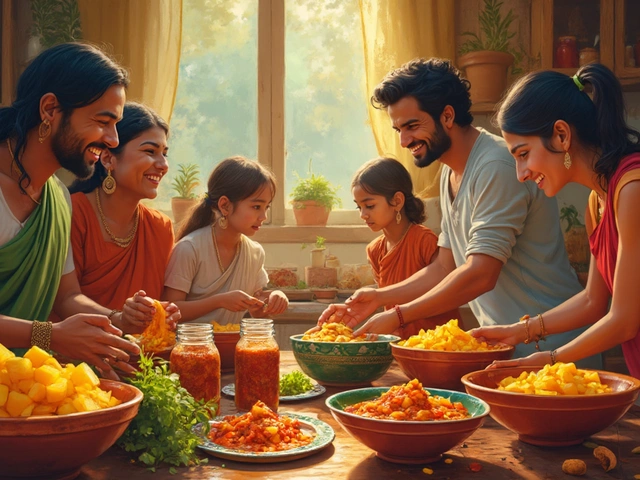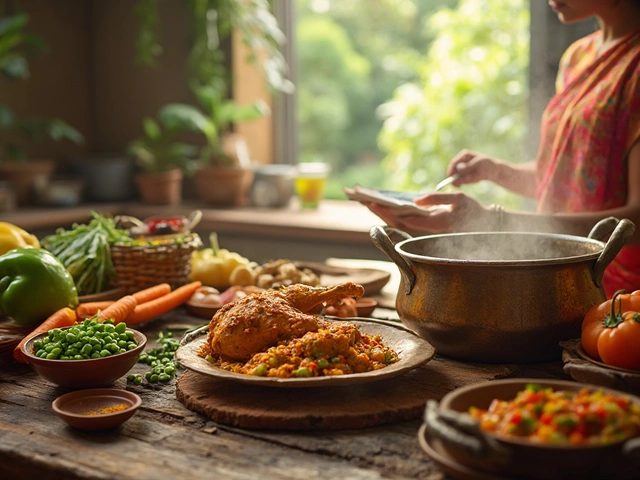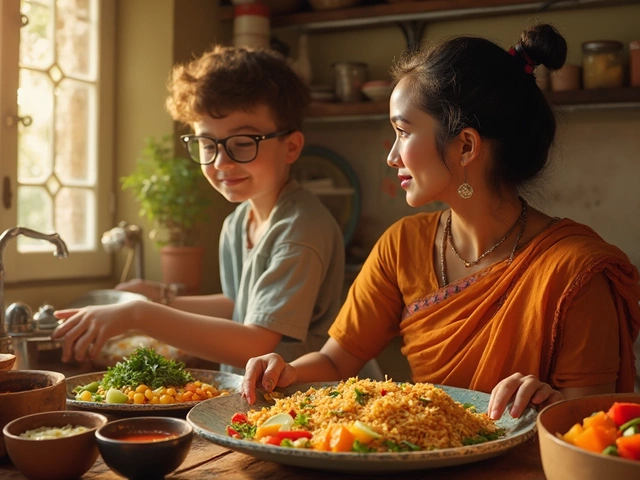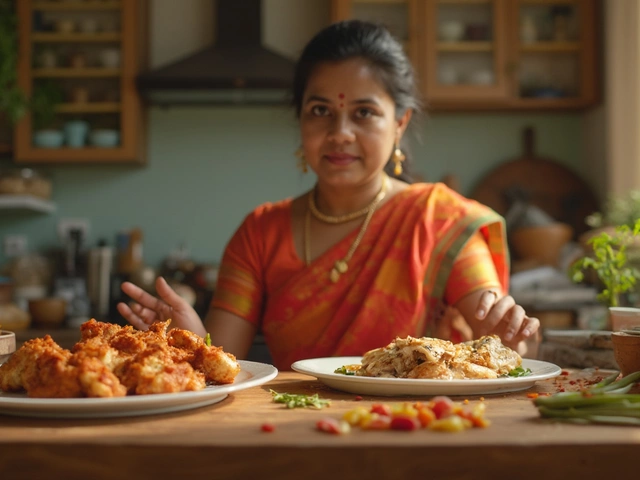If you’ve ever stood in awe at an Indian sweet shop, you’re not alone. The walls gleam with gold and pastel towers, trays stacked with treats that sparkle under the lights, tempting you with their heady floral scents and sugary charm. There’s a certain magic to these colorful treasures. But here’s the big question: how did India become a land where sweets aren’t just a treat, but a core part of life, rituals, and identity? Stick around, because there’s way more to mithai (the Hindi word for sweets) than just sugar and spice.
The Heartbeat of Tradition: Why Sweets Rule in India
If you’ve been to a single Indian wedding, Diwali celebration, or even a casual dinner party, you’ve probably noticed something: sweet treats always show up, sometimes in ridiculous amounts. There’s an emotional gravity to these desserts. For generations, mithai has symbolized hospitality, luck, and shared happiness. In ancient India, scrolls mentioned early versions of jaggery-laden confections offered to gods. Fast forward a few thousand years, and nearly every region has its own signature sweets—signature flavors, textures, and colors show up in different states, reflecting India’s mind-boggling diversity.
Bengal’s famed Rasgulla, squishy white cheese balls bobbing in rosewater syrup, actually have their origins in the kitchens of 19th-century Kolkata. Over in the west, Rajasthan’s ghevar—a disc-shaped treat soaked in saffron syrup—signals the start of monsoon festivals. Down south, Mysore Pak’s dense, golden richness tells a story of royal banquets.
It’s not just about taste. Certain sweets are believed to carry luck and blessings. Laddus, usually handed out in temples, are round for a reason: circles represent eternity and wholeness. Sweets are swapped among neighbors every Diwali, and you’ll find boxes of them dotting office shelves on Holi, Raksha Bandhan, and Eid. Even birthdays in India rarely see cake as the defining centerpiece; a bite of sweet, usually a piece of barfi or peda, does the honors instead.
Long story short: mithai is more than food. It’s a symbol at births, weddings, coming-of-age ceremonies, and everything in between. The traditions are old, sure, but they haven’t faded; they’ve only gotten richer and more creative over centuries.
The Legends: Iconic Indian Sweets with Timeless Reputations
So, let’s get into the nitty-gritty: what are the traditional sweets you absolutely need to know (and, ideally, taste)? The answer is not as simple as naming a single star—India’s landscape of desserts is wider than most countries’ entire food scenes. Still, a few giants stand out.
Traditional Indian sweet classics include jalebi, those sunset-colored spirals soaked in syrup and served scorching hot—perfect for chilly winter mornings. Gulab jamun, those velvet-soft dumplings steeped in cardamom sugar syrup, frequently show up at weddings and festivals. Kashmir’s phirni is a creamy, rice-based pudding dressed in silver leaf. Meanwhile, Goa has bebinca, a Portuguese-influenced, multi-layered baked dessert traditionally eaten at Christmas.
Kaju katli (cashew fudge) is another beloved treat with a melt-in-your-mouth texture and delicate sweetness—no wedding box is complete without it. Peda, small milk fudge rounds, have a creamy richness and come in flavors like saffron, pistachio, or rose. Then, there’s sandesh from Bengal, a masterpiece of fresh chhena (paneer cheese) mixed with sugar and sometimes garnished with edible silver foil or dried fruits.
To give you a true taste of the variety, check out this quick breakdown of a few iconic sweets:
| SWEET | MAIN INGREDIENTS | REGION | TYPICAL OCCASION |
|---|---|---|---|
| Rasgulla | Chhena, sugar, rosewater syrup | West Bengal/Odisha | Festivals, celebrations |
| Jalebi | Flour, sugar syrup, saffron | Across India | Breakfast, street food, weddings |
| Gulab Jamun | Milk solids, flour, sugar syrup | North India | Weddings, birthdays, festivals |
| Laddu | Flour (besan or semolina), ghee, sugar | Pan-India | Religious rituals, temple prasad |
| Payasam | Rice or vermicelli, milk, sugar, cardamom | South India | Harvest festivals, birthdays |
| Kaju Katli | Cashew, sugar, ghee | North India | Gifting, special occasions |
Each of these sweets holds a solid place in Indian life. Their recipes are handed down through families, updated a little with time, but those fundamental flavors and textures remain stubbornly classic. Some shops have even kept their recipes secret for generations—so locals swear by a particular halwai (sweet maker) for their favorite barfi or jalebi.
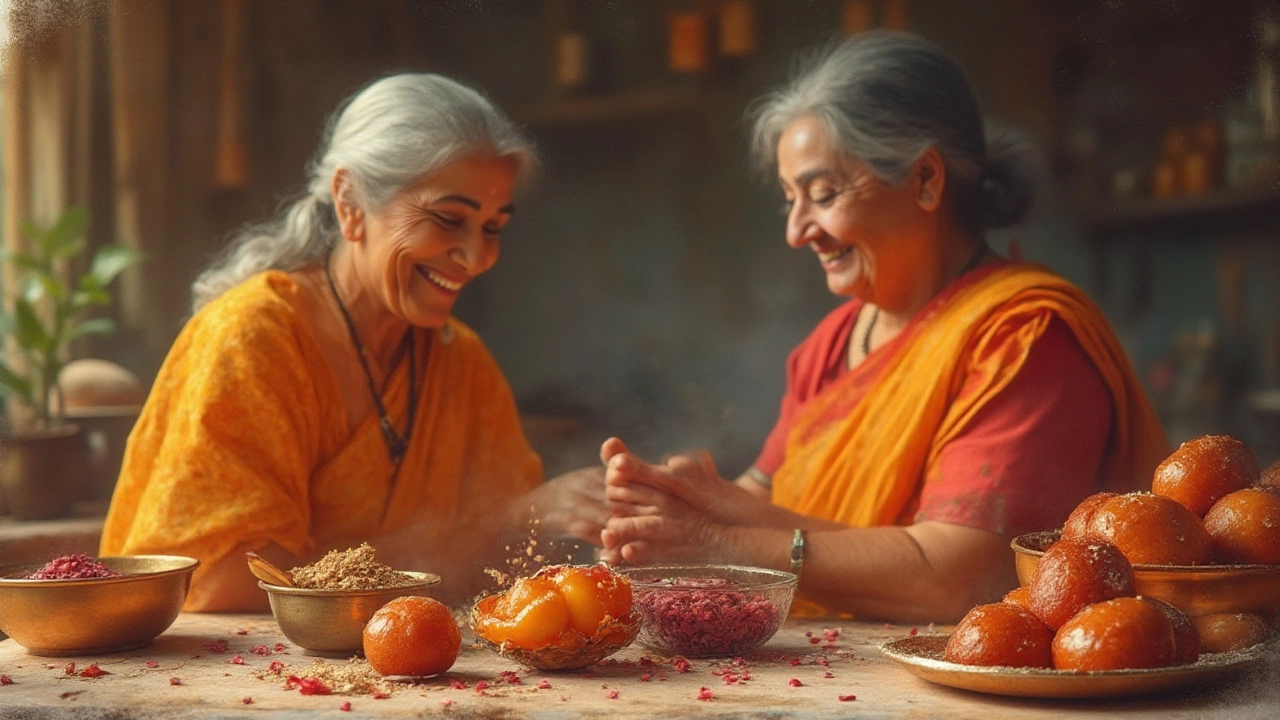
Making Mithai at Home: From Simple to Showstopper
Mithai may look complex—think deep-fried syrups, saffron threads, and silver leaves—but making some of them at home is surprisingly doable, especially if you’re equipped with a few pro tips. Indian sweets usually start with humble pantry basics: milk, ghee (clarified butter), sugar, maybe a handful of nuts or a splash of rosewater. But timing and technique are the real game changers here!
The easiest Indian sweet to try at home? Coconut barfi. All you do is simmer grated coconut with milk and sugar until it thickens, then set it in a tray and cut it into squares when cool. If you’re feeling more adventurous, try besan laddu. Roast chickpea flour in ghee until it smells nutty, then mix in sugar and shape into rounds. Each region’s take on laddus brings a different vibe—some add desiccated coconut, others toss in dried fruit or melon seeds for crunch.
If you want to really wow friends, try making jalebi: a fermented flour batter piped into hot oil, fried, and dunked in saffron syrup. No need for fancy equipment—for piping, a clean plastic bag with a small hole works fine. Getting the spiral shape without breaking a sweat takes some practice, but the result is deeply satisfying (and a little addictive). Rasgulla, another favorite, starts by curdling milk to make homemade paneer, then boiling bouncey little balls in syrup. Phirni is even easier: cook ground rice in milk till creamy, flavor it with cardamom, and let it chill in the fridge before serving in small clay pots.
Here are a few tips from experienced home cooks to make your sweets taste like they’re straight from the shop:
- Don’t skimp on good quality saffron or cardamom—they make flavors pop.
- Use fresh milk and paneer. Store-bought versions can make sweets heavy, not light and fluffy.
- For a creamy texture in fudge-based sweets (like peda or barfi), stir continuously to avoid lumps and keep heat moderate.
- If trying a fried sweet like gulab jamun, remember: low heat is key for a golden-brown crust and cooked-through centers.
- To mimic that café look, sprinkle with pistachios or edible silver varq just before serving.
Real talk: making Indian sweets can get messy. Get your muslin cloth ready for straining, clear your calendar for the afternoon, and expect some sticky fingers. But the sense of pride—and all the happy faces after that first bite—makes it wildly worth it.
The Secret Science Behind Indian Sweets
Sweets might seem simple, but there’s a lot of food chemistry behind those glossy textures and melt-in-the-mouth flavors. Ever wondered how gulab jamun stays so spongy and soaks up syrup without collapsing? That’s the magic of khoya (reduced milk solids) balanced precisely with flour, kneaded till just right. If you overwork or under-add either, you’ll end up with dense or crumbly balls that refuse to soak syrup.
Rasgulla, Bengal’s prized dessert, gets its signature bounce from the way chhena dough is kneaded. Too rough, and you’ll get chewy, rubbery balls; too little, and they fall apart in syrup. That’s why many Bengali grandmas say making the perfect rasgulla can’t be rushed—gentle touch and patience pay off.
The science extends to sugar stages. For barfi, sugar syrup is boiled to a ‘soft ball’ stage—this means when you pour a drop into cold water, it forms a squishy ball between your fingers, not hard or snappy. Jalebi relies on a fermented batter, and the right level of sourness gives them their signature tang. Saffron and cardamom infusions don’t just add aroma; they also serve as mild preservatives, extending the shelf life of sweets in the days before refrigeration became common in India.
Ever noticed iconic sweets displayed under glass domes at street-side stalls, even in the midst of sweltering summer? Indian cooks knew their stuff. Ghee acts as a natural preservative and flavor enhancer, allowing sweets like ladoo and mysore pak to last up to a week even outside the fridge.
It’s hard not to respect the knowledge embedded in these recipes. Many families swear by the tiniest changes: the hour of boiling, the source of their sugar, the grind of their cardamom. Scientific studies from Indian food institutes have shown that locally sourced, unprocessed ingredients actually produce better-tasting, longer-lasting sweets. Maybe that’s why a bite of homemade mithai always tastes like memory.
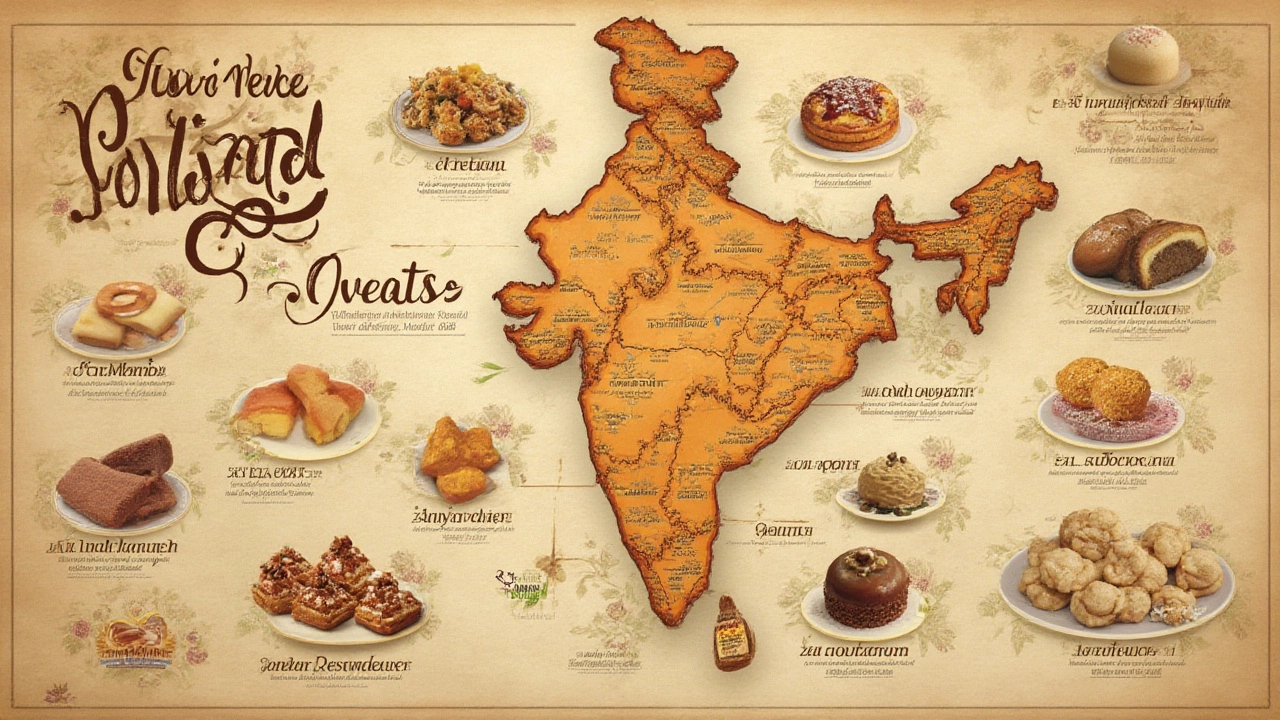
Celebrating a Sweet Future: Modern Twists and Festival Favorites
The world of mithai isn’t frozen in time. More and more, Indian chefs and home cooks are pushing boundaries—think chocolate barfis, mango rasgullas, or vegan gulab jamun made with almond milk. Instagram feeds are packed with neon-hued fusion mithai for Ganesh Chaturthi or Diwali, sometimes decked with gold leaf, fresh flowers, or exotic nuts imported from halfway across the globe.
But for all the cool reinterpretations, classic sweets still reign when it comes to festivals and special moments. Diwali is unthinkable without a box of assorted barfi or motichoor laddu. During Holi, don’t be surprised to see trays of gujiya—flaky sweet dumplings—with bowls of colored powder on the side. On Raksha Bandhan, it’s custom for brothers and sisters to swap peda or rasgulla after tying the traditional thread. All across the country, when a family welcomes a new baby or marks a big milestone, someone grins and nudges a mithai box your way. It’s just the way things are done.
Even health trends can’t keep Indians from cherishing their sweets. Now, more shops are offering sugar-free versions, less ghee, or even gluten-free options to match new lifestyles. Some urban mithai shops now offer delivery all over the world, shipping boxes of fresh kaju katli or pista roll right to your door, within 48 hours of being made. If your last trip to India feels far away, a bite from one of these boxes can bring you right back with about a nanosecond’s notice.
Curious to explore on your own? No need to wait for a trip to India. Try visiting your nearest Indian grocery or specialty store—start with a mixed box of classics, or order online from trusted brands. Challenge yourself: try making one sweet at home, then share the batch with friends or family. Don’t be shy about experimenting, but don’t forget to enjoy those classic bites that have kept India sweet—and smiling—for centuries. There’s really nothing else like it.





